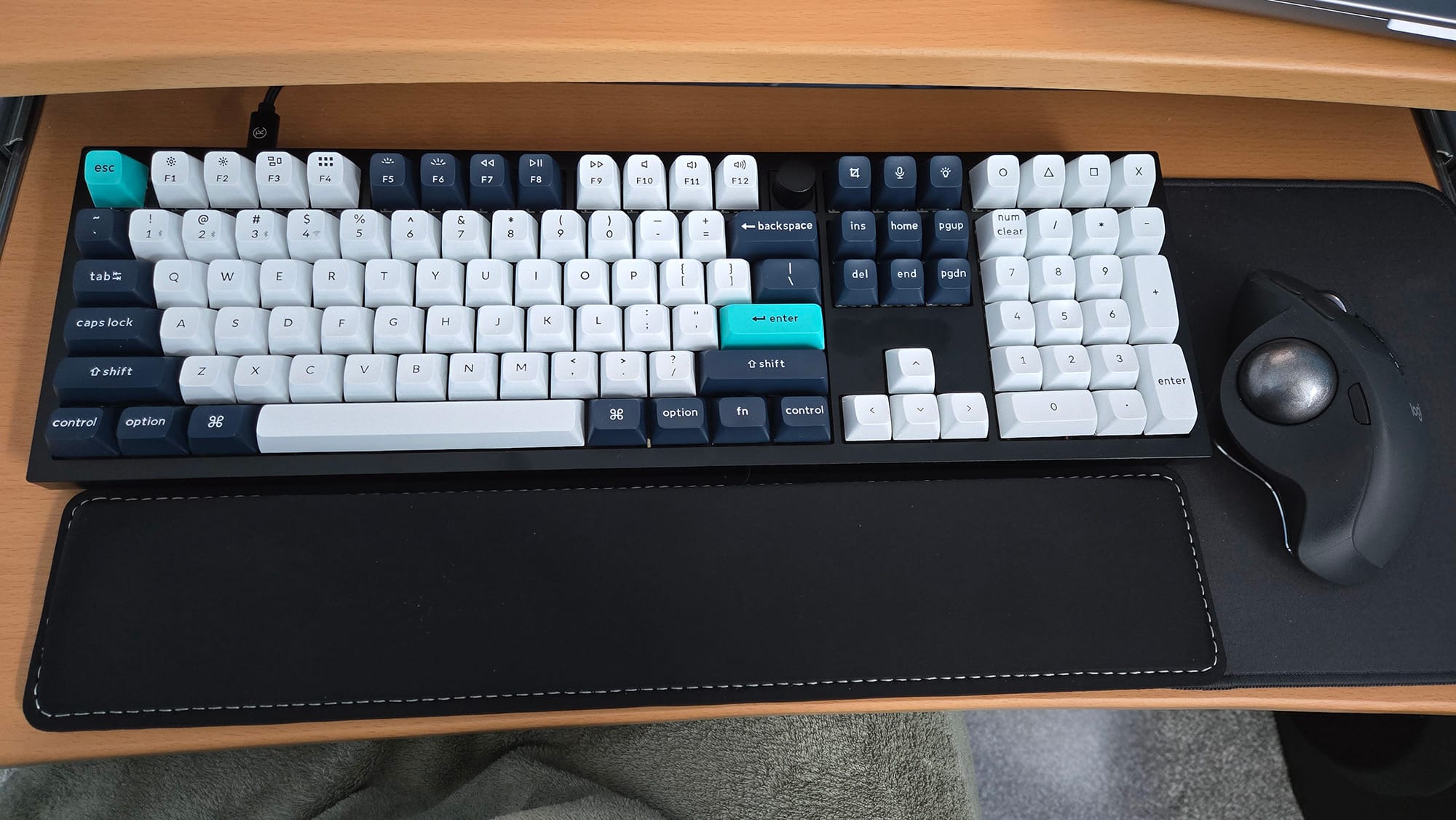Keychron Q6 Max: The Perfect Writer's Keyboard
They Keychron Q6 Max is, so far for me, the perfect keyboard for writing and programming. This review delves into the quality and features that make it so.

Yes, I dared to use the P-word. The Keychron Q6 Max with Gateron Jupiter Brown switches checks every box on my list of must-have keyboard features, and a few besides. It's solid. Reliable. Quiet. Every keypress feels like a dip into heaven. And it came configured for Mac out of the box. Home-run, Keychron.
Windows users can change the Option and Command keycaps for their OS equivalents, made easy with the included removal tool, plus the flip of a switch on the back of the unit. It connects to your machine via USB-C cable, an included 2.4 GHz wireless USB-C adapter, or Bluetooth, and includes a USB A-to-C converter. I'm using the wired connection because I'm a wire kind of guy, so I can't speak to the wireless performance or battery life, but wired is flawless.
Case in point: I'm a mechanical keyboard enthusiast and have owned many over the years, first for programming only, then later for programming and writing. All of them suffered from double- and triple-key presses so badly that I had to install an app called Unshaky to filter out duplicate strokes. It catches a lot and has, frankly, saved my sanity. I disabled Unshaky when I bought the Q6, however, and haven't seen a single double-press yet. Keychron, I salute you!
There's more! I've owned a few Cherry MX Brown keyboards over the years. The Q6 Max is by far the quietest, which I attribute to the double-gasket design and gazillion sound-dampening layers in the aluminum chassis (it's still too loud for my wife, but to each their own).
The switches are also hot-swappable, which was a huge selling point for me, since the primary reason I've had to upgrade in the past is worn switches, and I'm not confident enough in my soldering skills to change them out the hard way. When my Q6 arrived, the numeric keypad's period key had come loose. I popped the keycap off, snapped it in place, then pressed the keycap back on. Poof! All better. And if I decide I want something other than MX Brown switches, ~$40 will get me a full set. Or I can mix and match for gaming. I probably never will, but it's nice to have the option.
The keyboard comes with a knob and seven "whatever" keys that you can bind to anything you want. This is a huge plus for me because I use macros for mundane tasks like switching audio sources, locking the screen, and putting the computer to sleep. But, if you need more than seven, every single key on the keyboard can be mapped to whatever you want using their slick browser-based config tool. I'm an experienced programmer, and even I have no idea how they breached the browser sandbox to interface with the keyboard, up to and including flashing the firmware, but it works very well as long as you use a Chromium-based browser. Customizations also include full-key mapping, macro management and recording, and RGB backlight settings.
The keymap, it's worth noting, has four separate layers: 2 for Mac, and 2 for Windows out of the box. The second layer in each mode can be accessed by pressing the "fn" key—or, frankly, whichever key you have that layer mapped to. If you only use one OS, you can map keys to access all four layers, assuming you need 400+ keybindings. The seven extra keys on the first layer are enough for me, but I certainly won't judge.
As the icing on an already delicious cake, the firmware is open-source, which warms my community-loving heart.
The sticking point for the Q6 Max may be price. Mine cost just over $200 on sale from BestBuy. This is within the range of what I've paid for other mechanical keyboards, however, and, given the quality and features, it felt like a steal.
If you're a writer—or anyone who spends a lot of time typing—looking to upgrade and have the budget, I can't recommend the Q6 Max enough.
